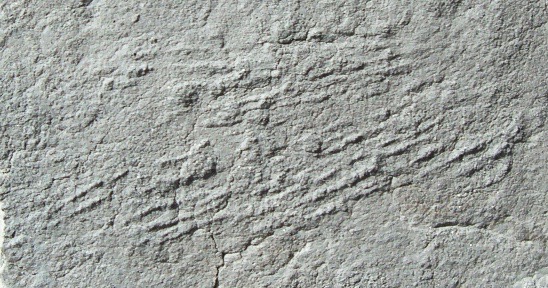 Evolution
Evolution
Kimberella — Locomotory Tracks

Editor’s note: We are delighted to present a series of posts by paleontologist Günter Bechly on the Ediacaran organism Kimberella. If identified as an animal, it would “predate the Cambrian explosion of bilaterian animal phyla as a kind of ‘advance guard.’” The question is of interest for debates about evolution and arguments about intelligent design raised by Stephen Meyer, among others. Find the full series about Kimberella here.
But what about tracks of the moving animal? There are indeed some fossils from the White Sea that show specimens of Kimberella together with traces of their creeping rearwards through burying sediment (Ivantsov & Fedonkin 2001a, 2001b, Fedonkin 2001, 2003: fig. 14, Fedonkin et al. 2007b: figs 20-22, Ponder & Lindberg 2008: fig 3.1B, Ivantsov 2009: pl. 2, 2010b: pl. 1, 2012: fig. 11, Parkhaev 2017: fig. 2b, Ivantsov et al. 2019: fig. 1). This is indeed unequivocal und undeniable evidence for motility (contra Evolution News 2015). Such locomotion traces at least rule out the possibility Kimberella could be a misinterpreted representative of the sessile frond-like Ediacaran organisms (e.g., as suggested at the Palaeos website), and it also makes a coelenterate grade affinity much less likely. The curious fact that such locomotion traces are rare and never associated with feeding traces has been explained by the fact that the Ediacaran seafloor was covered with microbial biomats, which were “soft enough to be scratched by radular teeth, but firm enough to carry the rather heavy animal itself, so that it did not leave a trail” in the underlying sediment (Seilacher 1999, Seilacher et al. 2003, Seilacher & Hagadorn 2010, Sperling & Vinther 2010, Gehling et al. 2014). It is also remarkable that the body fossils of Kimberella “are almost never superimposed over these scratches,” with the only exception of a specimen figured by Gehling (1996: fig. 5:13), and also “these scratches were never erased by Kimberella” (Seilacher & Hagadorn 2010).
Inferring Mucus Sheets
From the structure of these locomotion traces, which are of variable width that often differs from the body width, the production of mucus sheets has been inferred for Kimberella (Fedonkin et al. 2007b, Ivantsov 2009, 2010b, 2012 Ivantsov et al. 2019), which would of course agree well with a molluscan affinity. Ivantsov et al. (2019: fig. 1d) figured the single known specimen of a small Kimberella specimen that is not preserved as usual at the end of its trace, but in the very middle of it, which suggests that the trace was stabilized by an envelope of mucus and the animal retracted into its own trail of mucus band. This also proves that Kimberella could move in both directions, which was also suggested by Gehling et al. (2014), who found that “the maker had the capacity to move in reverse as well as pivoting and moving forward.”
Strangely, only two fossils of a putative resting trace of Kimberella have been described, i.e., from the Ediacara locality in Australia (Gehling et al. 2014: figs 5-6). They are surrounded by fan-like Kimberichnus scratch marks that do not overlap with the resting trace, which is actually another piece of convincing evidence that Kimberichnus indeed represents the feeding trace of Kimberella. Why such resting traces are so rare is still an unexplained mystery, though (Ivantsov et al. 2019).
Next, “Kimberella — The Oldest Radula (Not).”
